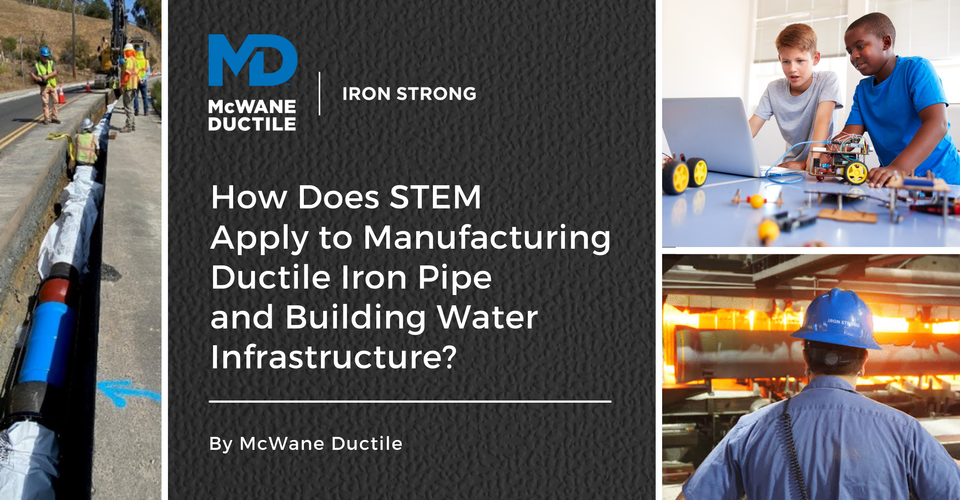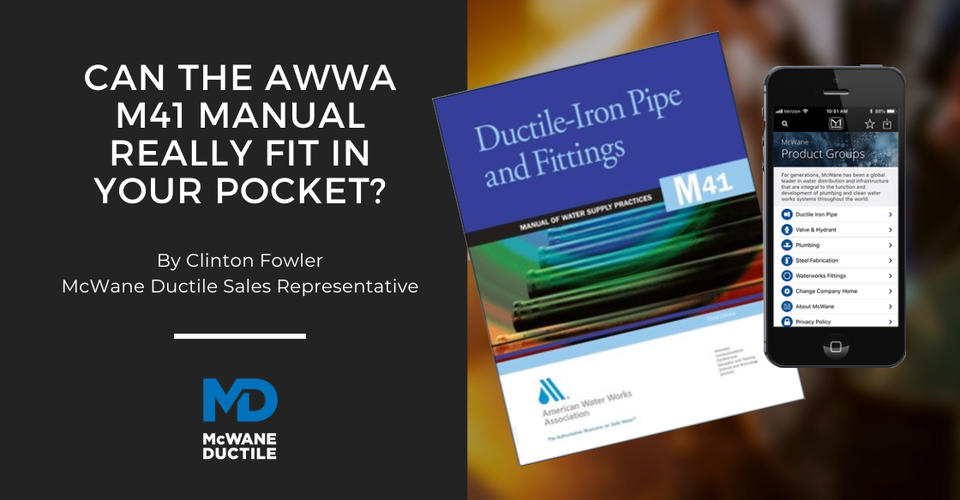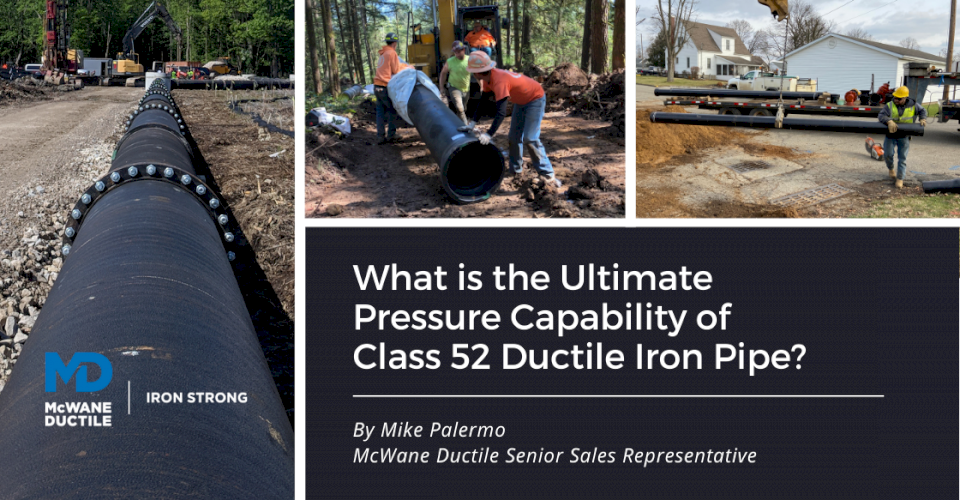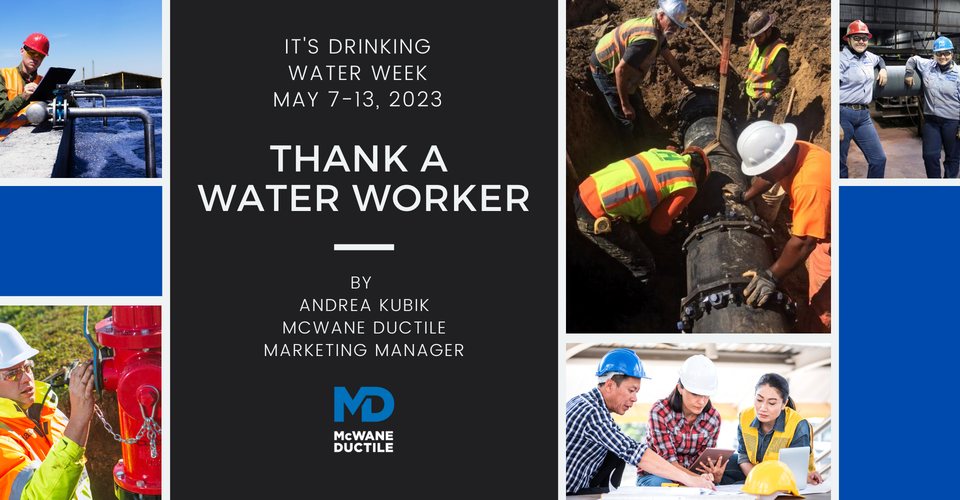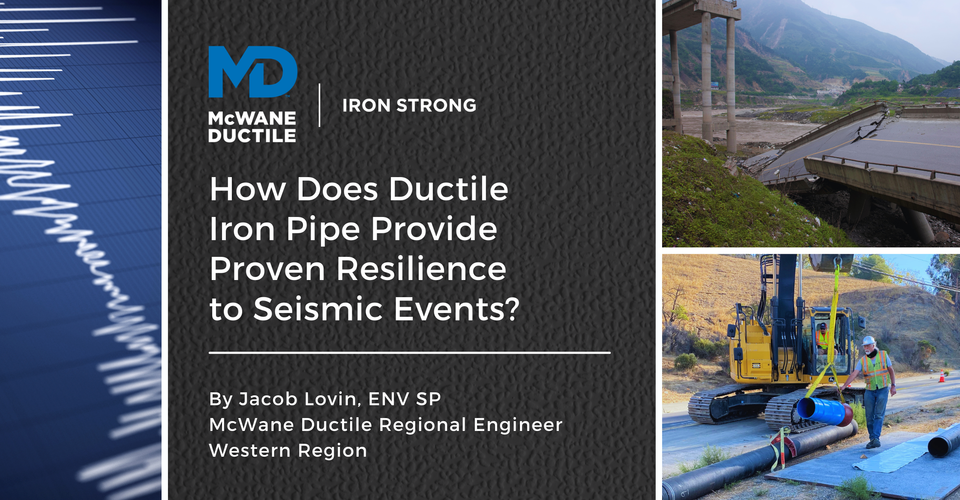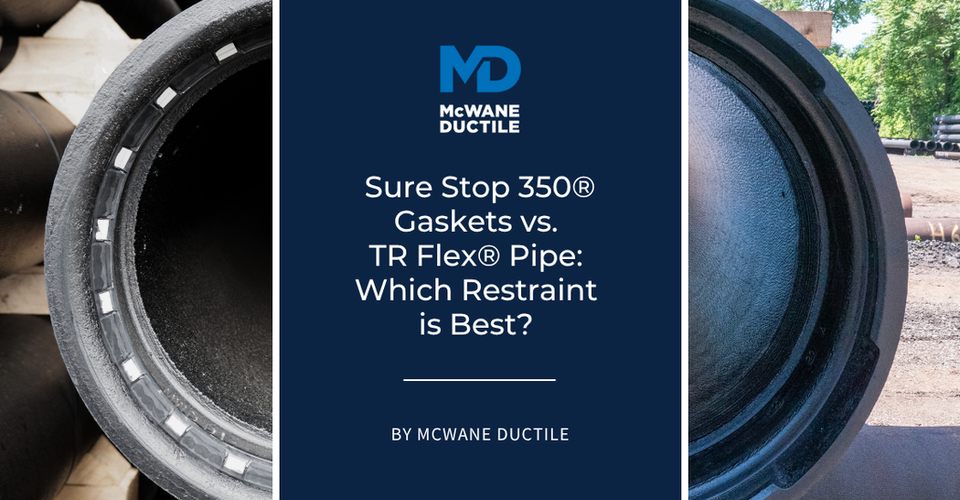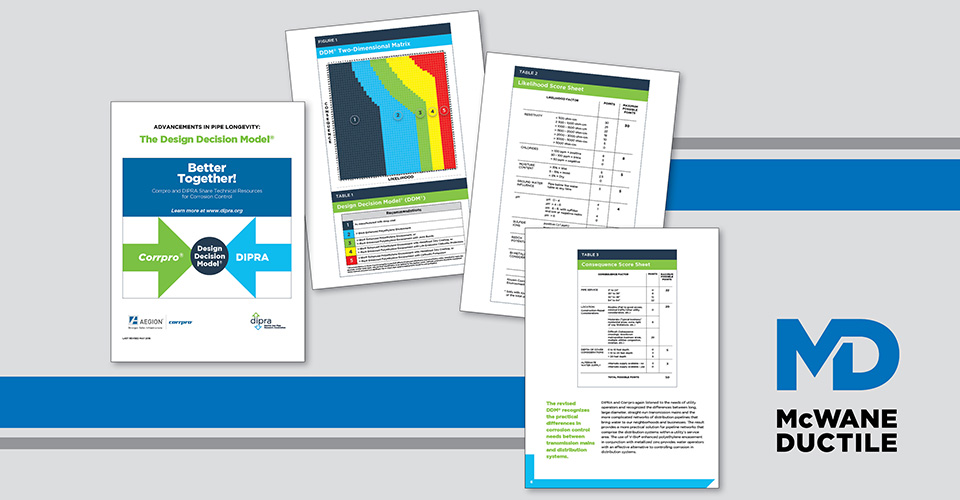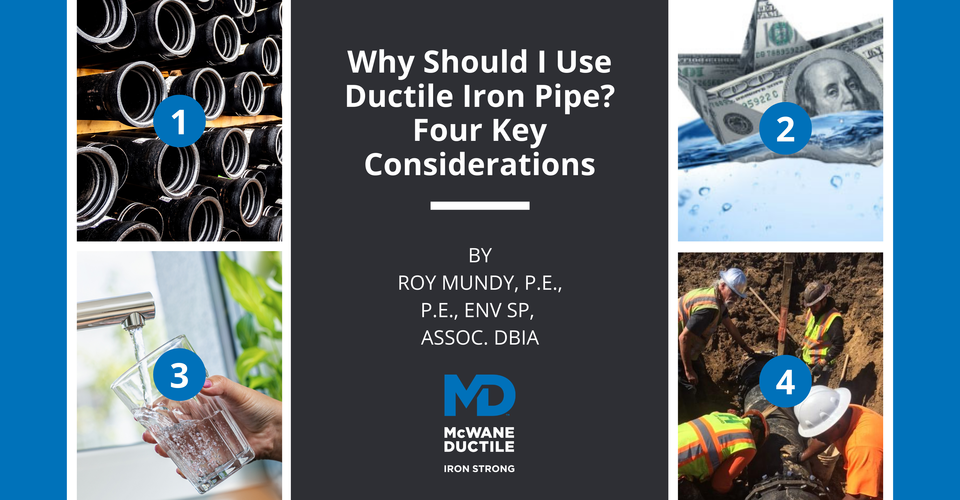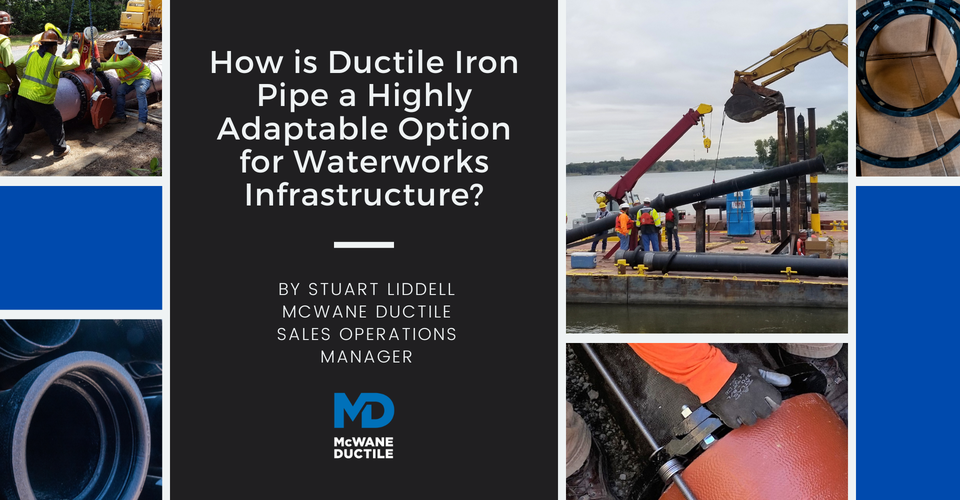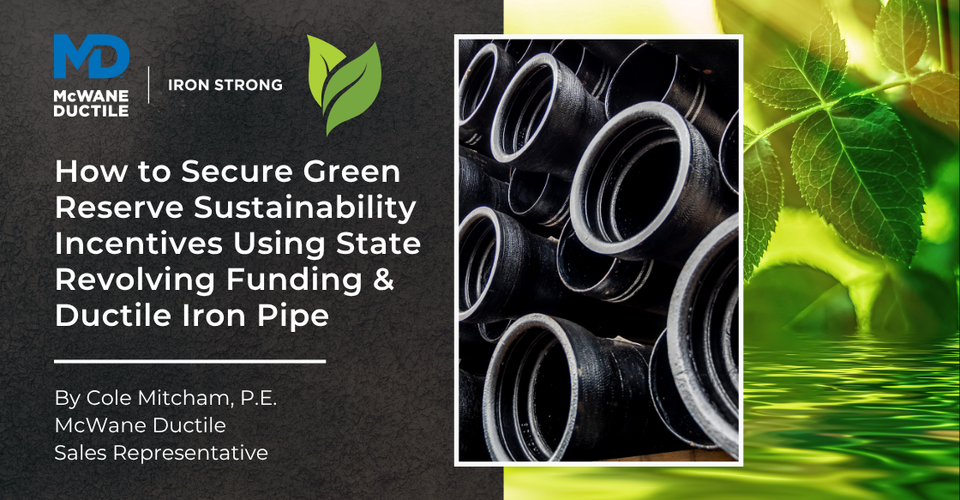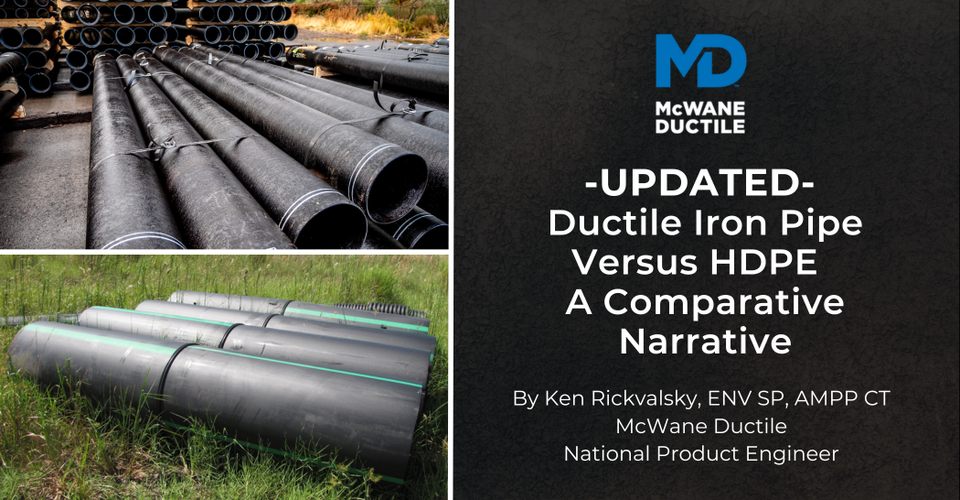-
How Does STEM Apply to Manufacturing Ductile Iron Pipe and Building Water Infrastructure?
11/08/2023 In Our Company Products TechnicalNovember 8 is National STEM/STEAM Day, highlighting the importance of Science, Technology, Engineering, Arts, and Mathematics in children’s education. The manufacturing of Ductile iron pipe (DI pipe) and constructing pipelines for water and wastewater infrastructure are complex processes that rely heavily on STEM principles. In this #IronStrong Blog, we will explore the intricate connections between these fields and their significance in ensuring safe and efficient water and wastewater management now and in the future.
-
Can the AWWA M41 Manual Really Fit in Your Pocket?
03/30/2023 In ProductsAnyone who has ever studied or just skimmed the pages of the AWWA M41 Manual (M41) knows it helps to be of an engineering mindset to understand most of what’s within it. What if you could turn this indispensable reference into a simplified, easy-to-access tool that fits your pocket? Well, the McWane Pocket Engineer does just that! In this Iron Strong Blog, we will discuss the many Pocket Engineer (PE) components and how this real-time application utilizes important aspects of the M41 Manual to simplify life for you, the water professional.
-
What is the Ultimate Pressure Capability of Class 52 Ductile Iron Pipe?
05/21/2021 In Products TechnicalCast iron pipe was introduced to the United States in 1816. Since then, numerous other piping materials have been offered and utilized. None were able to supplant cast iron as the leading performer until Ductile iron pipe became available. The introduction of Ductile iron pipe (DI pipe) to the marketplace in 1955 remains among the most significant advancements in the history of the pressure pipe industry. It was quickly recognized as a pipe material with all the established durability of gray cast iron, yet with added strength and resiliency from its innate and lasting flexibility. It was first used for special and severe conditions of high pressure, such as where water hammer and excessive external loads might have existed.
-
How to Address a Failed Bacteriological (Bac-T Test) in Your Ductile Iron Pipeline
06/13/2024In the spring of 1993, I was 12 years old when a sudden illness swept through my family. It started with a subtle discomfort in my stomach, but within days, it escalated into a sickness that left us bedridden for over a week. Our entire neighborhood seemed to be ill.
Unknown to us, our proximity to the Howard Water Treatment Facility, one of Milwaukee's primary water treatment plants, was the source of our suffering. The news broke too late, revealing that the water flowing from this facility was contaminated with Cryptosporidium, resulting in an “Estimated 403,000 people falling ill” (The New England Journal of Medicine, 1994). Due to this experience, I know firsthand the importance of ensuring clean water is supplied throughout our nation’s distribution networks.
To learn more about this outbreak in Milwaukee, click here to be redirected to an interactive presentation.
-
It's Drinking Water Week - Thank a Water Worker
05/10/2023 In environment ProductsIn our often-frantic daily routines, we rarely stop to think about something as simple as the water we consume daily. How does water get to our home? How do we know the water is clean and safe? Who’s responsible for providing this critical need? With May 7th through the 13th, 2023, being Drinking Water Week, this #IronStrong Blog highlights the importance of water workers and simply sends a much-deserved thank you!
-
How Does Ductile Iron Pipe Provide Proven Resilience to Seismic Events?
09/04/2025 In Products Resiliency TechnicalIn regions prone to seismic activity, the resilience of critical infrastructure plays a pivotal role in public safety. Among essential systems, water distribution networks are particularly vulnerable during catastrophic earthquakes, where ground movement and soil liquefaction can cause widespread pipe failure. Ductile iron pipe (DI pipe), however, has emerged as a highly reliable material due to its superior properties, joint flexibility, and proven performance in past seismic events. This #IronStrong Blog examines how the unique design and strength characteristics of DI pipes contribute to their remarkable ability to withstand the intense stresses of major earthquakes, ensuring continuity of service when it is needed most.
-
Sure Stop 350® Gaskets vs TR Flex® Pipe: Which Restraint is Best?
09/25/2018 In Installation Products TechnicalThere are several methods for restraining Ductile Iron Pipe joints, and a common question from our customers is, “Which method of restraint is best—locking gaskets or boltless restrained joints?” Both methods are effective, but the best choice for your project depends on the type of installation, the operating pressure of the line, and the diameter of the Ductile iron pipe being used. In this #IronStrong Blog, we will compare two common restraint options offered by McWane Ductile: Sure Stop 350® Gaskets and TR Flex® Pipe.
-
Corrosion Protection Recommendations for Ductile Iron Pipeline
05/10/2019 In Products TechnicalDuctile iron pipe (DIP) is one of the most widely used pipe materials in North America. The Design Life is second to no other pipe material due to its robust design. This pipe material is the strongest and most resilient available for water and wastewater utilities providing unparalleled Life-Cycle value.
In many areas, utilities need to consider how to protect these valuable pipelines from corrosive soils. The question is “How can we economically protect these pipelines to meet or exceed the 105-110 year average design life of DIP?”
-
Why Should I Use Ductile Iron Pipe? Four Key Considerations
02/28/2019 In Environmental & Safety Installation Technical“Why should I use Ductile iron pipe?”
The question is ostensibly meant to include “instead of other types of piping material.” Well, the reasons are vast and vary depending on project requirements. Since we aren’t talking about a specific project, we’ll look at the general overriding reasons Ductile iron pipe is the best choice for your piping projects.
-
How is Ductile Iron Pipe a Highly Adaptable Option for Waterworks Infrastructure?
08/15/2024As a Sales Operations Manager in the waterworks industry, I recently attended the American Water Works Association's Annual Conference and Exhibition (ACE24) in Anaheim, California. This annual conference focuses on product innovations and the latest technological advancements in water infrastructure.
Latest Posts
- Can Joining Water Works Industry Organizations Help You Grow Professionally? 10/21/2025 In Careers WaterWorks
- How Does Ductile Iron Pipe Provide Proven Resilience to Seismic Events? 09/04/2025 In Products Resiliency Technical
- How to Secure Green Reserve Sustainability Incentives Using State Revolving Funding & Ductile Iron Pipe 07/29/2025 In Energy Products Technical
- UPDATED - Ductile Iron Pipe Versus HDPE - A Comparative Narrative 05/29/2025 In Comparisons Products Technical

